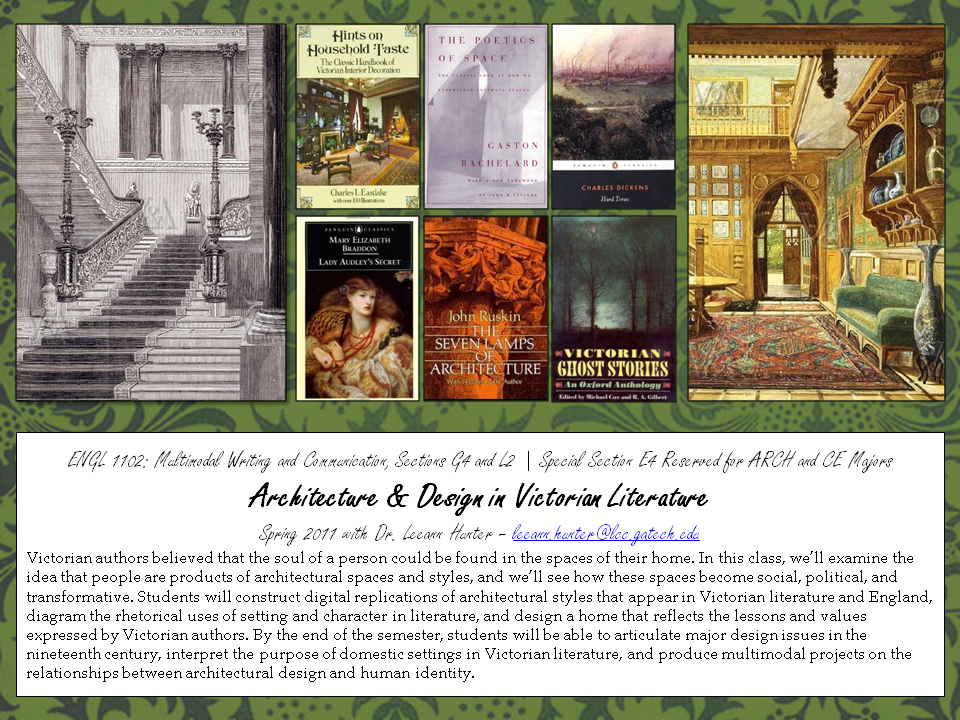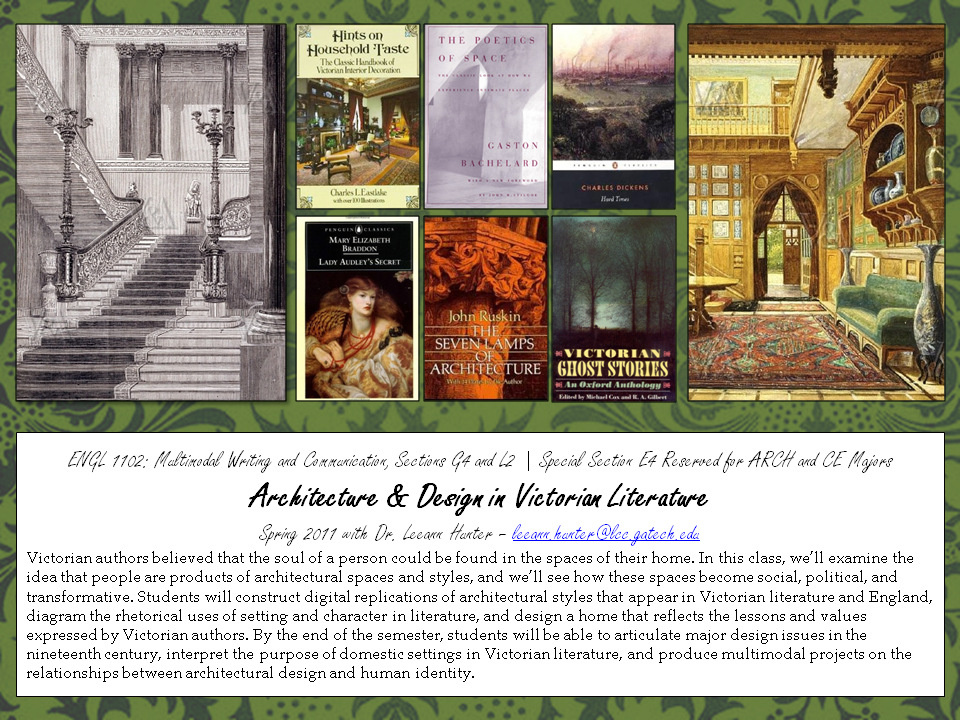 On Saturday, October 22, 2011, I am presenting a paper at the Victorians Institute Conference in a panel on “Teaching Dickens.” My paper is on “The Future of Dickens: Digitizing Architectural Spaces and Identity in Hard Times.”
On Saturday, October 22, 2011, I am presenting a paper at the Victorians Institute Conference in a panel on “Teaching Dickens.” My paper is on “The Future of Dickens: Digitizing Architectural Spaces and Identity in Hard Times.”
Abstract. John Ruskin influenced the way Victorians conceived of the human side of architecture. In his appreciation for the irregularities in Gothic architecture, he embraced the building as an organic entity created by humans with souls, not dehumanized machines or “slaves.” The literature of the period engages with this social aspect of architecture, from the builders who created the buildings to the families who inhabited them. While the Victorians became more concerned about privacy and class divisions, they also began to partition their rooms into single-purpose stations and engineer floor plans to maintain divisions between the two classes of residents. In literature, the social identities of characters might find their generation in the imagined physical spaces that engulf them. It might be that the most socially disconnected characters come from homes in which this space is most carefully divided. Or, in contrast, the most idyllic characters that represent a common humanity might come from a working-class home where everyone sleeps in one room. My hypothesis, as I designed a course syllabus engaged in these themes, was that people are products of architectural spaces and styles, and these spaces are social, political, and transformative.
In Spring 2011, I taught a multimodal composition course at Georgia Tech that was thematically focused on architecture and design in Victorian literature. I had a number of rhetorical goals at the outset: students would be able to articulate major design issues of the nineteenth century, interpret descriptions of domestic settings in Victorian literature, and produce multimodal projects on the relationships between architectural design and human identity. Charles Dickens’s Hard Times was particularly suited to the goals of my class because it explores identity in connection to a full spectrum of architectural spaces, including the schoolhouse, the factory, and the circus, and of social classes, including Stephen Blackpool, Sissy Jupe, Louisa Gradgrind, and Mr. Bounderby. For their final project on Hard Times, I asked students to create a digital poster using Prezi (or another electronic medium of their choice) that symbolically reconstructed the architectural spaces of Hard Times. Within this structure, students diagrammed the social identities and relationships of the characters associated with that space. How does this multimodal project respond to Hard Times in ways that a standard essay assignment could not? In what ways might such a project debilitate students’ growth as readers and critics of literature? In my presentation, I will share examples of multimodal student projects on architecture and identity in Hard Times (e.g. http://prezi.com/esayoj_gpy49/digital-poster/) and discuss their value in the analysis of literature and social architecture.
